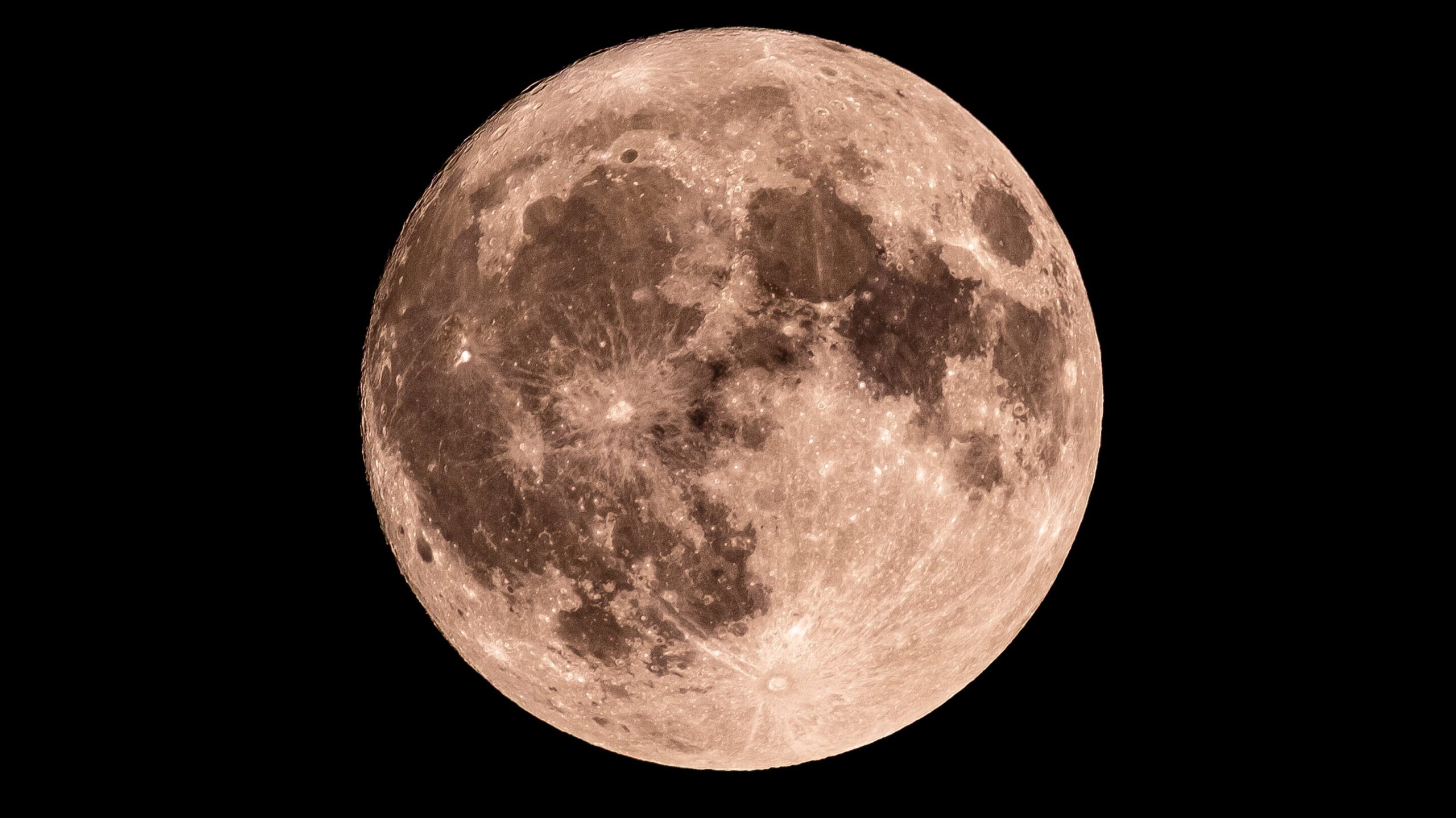Science
Stunning Full Moon and Total Lunar Eclipse Illuminate Night Sky

A remarkable celestial event is set to unfold on September 7, 2025, as the night sky features a Full Moon accompanied by a total lunar eclipse. According to NASA, this Full Moon will be fully illuminated, making it a perfect night for stargazers and astronomy enthusiasts.
The moon will appear at its brightest, allowing observers on Earth to see numerous lunar features without the aid of telescopes. Key landmarks such as the Aristarchus Plateau, Copernicus Crater, and Mare Crisium will be clearly visible. For those with binoculars, the Grimaldi Basin and Gassendi Crater will be accessible, while a telescope will reveal the more detailed Fra Mauro Highlands.
Details on the Total Lunar Eclipse
While this total lunar eclipse will offer a stunning view for many across the globe, it will not be visible from the United States. A lunar eclipse occurs when the Earth passes between the Sun and the Moon, casting a shadow on the latter. The next opportunity to witness a Full Moon will be on October 6, 2025, providing another chance for skywatchers to enjoy the beauty of the night.
Understanding moon phases is essential to appreciating these events. NASA explains that moon phases are determined by the 29.5-day cycle of the Moon’s orbit, which alters the angles between the Sun, Moon, and Earth. As a result, observers see varying portions of the Moon illuminated by sunlight, leading to different phases such as New Moon, First Quarter, and Full Moon.
The Eight Main Phases of the Moon
There are eight primary moon phases in this cycle:
– **New Moon:** The Moon is positioned between the Earth and the Sun, resulting in a dark, invisible appearance.
– **Waxing Crescent:** A small illuminated sliver begins to appear on the right side.
– **First Quarter:** Half of the Moon is lit, resembling a half-moon.
– **Waxing Gibbous:** More than half of the Moon is illuminated, but it is not yet full.
– **Full Moon:** The entire face of the Moon is fully visible.
– **Waning Gibbous:** The Moon starts to lose light on the right side.
– **Last Quarter (or Third Quarter):** Another half-moon, this time with the left side illuminated.
– **Waning Crescent:** A thin sliver of light remains on the left side before it becomes dark again.
As enthusiasts prepare for the Full Moon and lunar eclipse on September 7, 2025, the combination of these events promises to be a memorable spectacle. Whether observing with the naked eye or through powerful telescopes, this night will offer a unique opportunity to appreciate the wonders of our celestial neighbor.
-

 Lifestyle3 months ago
Lifestyle3 months agoLibraries Challenge Rising E-Book Costs Amid Growing Demand
-

 Sports3 months ago
Sports3 months agoTyreek Hill Responds to Tua Tagovailoa’s Comments on Team Dynamics
-

 Sports3 months ago
Sports3 months agoLiverpool Secures Agreement to Sign Young Striker Will Wright
-

 Lifestyle3 months ago
Lifestyle3 months agoSave Your Split Tomatoes: Expert Tips for Gardeners
-

 Lifestyle3 months ago
Lifestyle3 months agoPrincess Beatrice’s Daughter Athena Joins Siblings at London Parade
-

 World3 months ago
World3 months agoWinter Storms Lash New South Wales with Snow, Flood Risks
-

 Science3 months ago
Science3 months agoTrump Administration Moves to Repeal Key Climate Regulation
-

 Science2 months ago
Science2 months agoSan Francisco Hosts Unique Contest to Identify “Performative Males”
-

 Business3 months ago
Business3 months agoSoFi Technologies Shares Slip 2% Following Insider Stock Sale
-

 Science3 months ago
Science3 months agoNew Tool Reveals Link Between Horse Coat Condition and Parasites
-

 Sports3 months ago
Sports3 months agoElon Musk Sculpture Travels From Utah to Yosemite National Park
-

 Science3 months ago
Science3 months agoNew Study Confirms Humans Transported Stonehenge Bluestones









